Michigan survey ahead; Applied Digital surges; gold dips - what’s moving markets
Introduction & Market Context
Kongsberg Automotive presented its Q1 2025 earnings results on May 7, 2025, revealing significant revenue declines amid challenging market conditions. The automotive components supplier reported a 10.9% year-on-year revenue drop, with newly appointed CEO Trond Fiskum outlining a recovery strategy focused on cost reduction and operational efficiency.
The company faced headwinds across most global markets, with particular weakness in commercial vehicle production in North America and Europe. Despite these challenges, Kongsberg Automotive maintained its full-year guidance, expecting relatively unchanged revenues in the first half of 2025 compared to the second half of 2024, with potential upside in the latter part of the year.
Quarterly Performance Highlights
Kongsberg Automotive reported Q1 2025 revenue of 190.0 million euros, down 10.9% from Q1 2024, though showing a sequential improvement of 2.6% from Q4 2024. EBIT declined to 2.2 million euros (1.2% margin) from 10.1 million euros (4.8% margin) in the same quarter last year.
As shown in the following chart of quarterly financial performance, both revenue and profitability have declined significantly year-over-year, though EBIT showed slight sequential improvement from Q4 2024:

The revenue decline was widespread across most regions, with Europe (down 10.3%), North America (down 11.6%), and Asia including China (down 17.9%) all showing significant decreases. Only South America registered growth, with revenues up 10.5% year-over-year.
When comparing Kongsberg Automotive’s performance to overall market trends, the company outperformed in the commercial vehicle segments in Europe and North America, despite the challenging conditions:
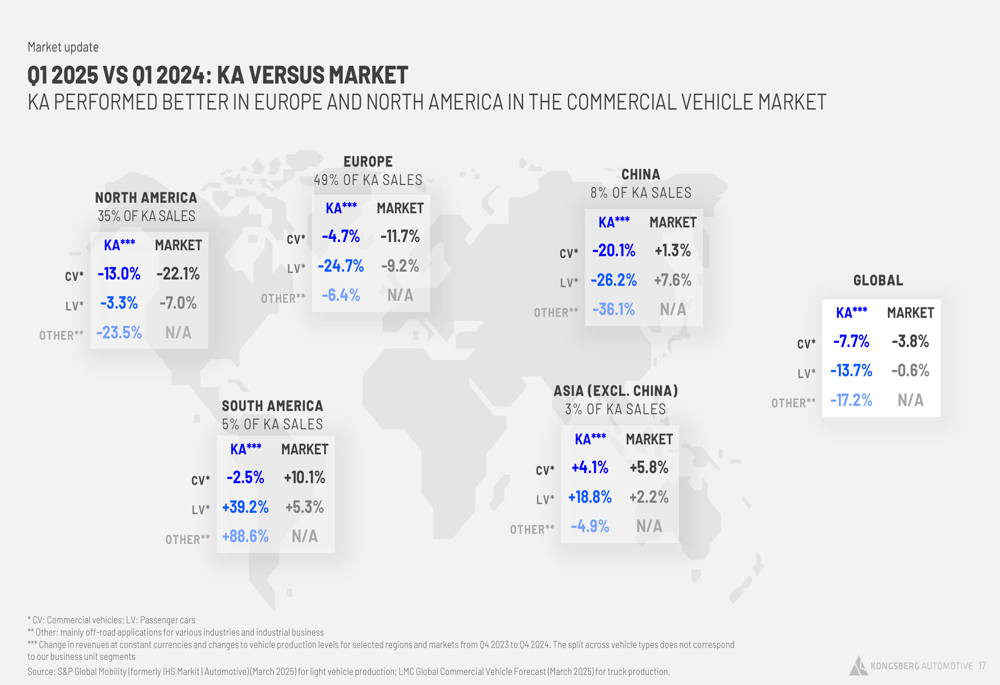
The company secured new business wins totaling 136.6 million euros in lifetime revenues during Q1 2025, with the majority (110.3 million euros) coming from its Flow Control Systems segment. The breakdown by market segment shows that Truck, Trailer, and Bus applications represented the largest portion at 82.0 million euros:
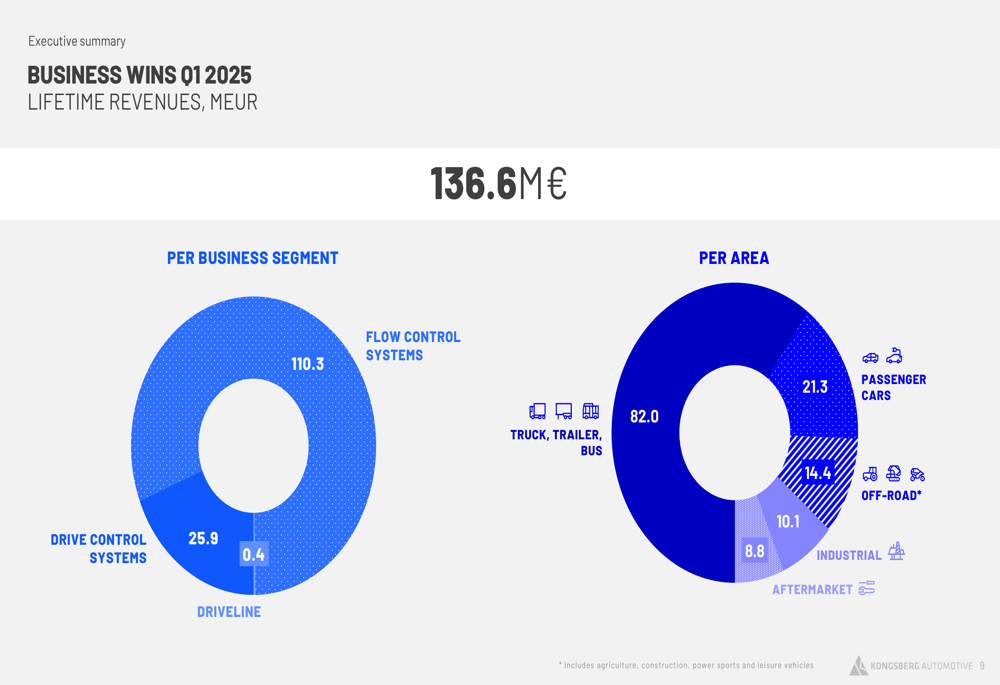
Strategic Initiatives
A significant development during the quarter was the appointment of Trond Fiskum as President and CEO on March 31, 2025. Fiskum, who previously held leadership positions at Kongsberg Automotive from 2005-2015, brings relevant experience from global industrial companies and a track record in managing turnarounds.
In response to declining financial performance, the company has intensified its cost-cutting measures. Kongsberg Automotive reported that its overhead cost reduction program is expected to deliver savings exceeding 17 million euros. Additionally, the company is reducing its workforce by approximately 150 positions, which is expected to generate at least 10 million euros in annual savings with full effect from Q3 2025.
The company is also actively addressing the changing customs tariff landscape, particularly tariffs imposed on imports to the US from China. A dedicated task force has been in place since February to monitor the situation and mitigate direct effects, while engaging with customers to recover tariff-related costs.
Detailed Financial Analysis
The decline in EBIT from 10.1 million euros in Q1 2024 to 2.2 million euros in Q1 2025 can be attributed to several factors. The following EBIT bridge illustrates the key components of this change:
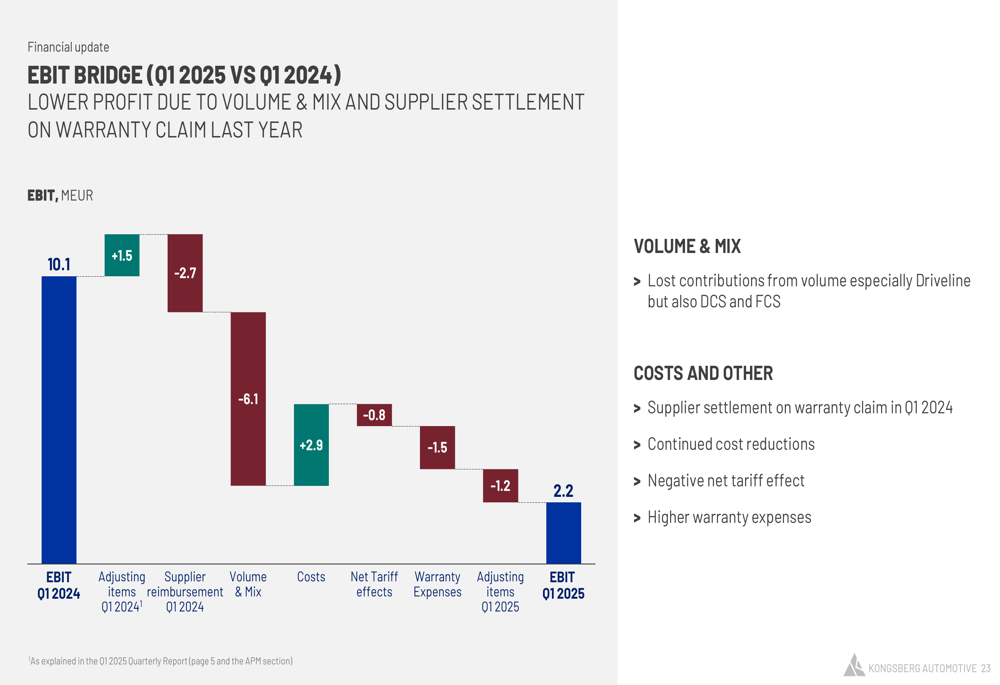
Volume and mix effects had the most significant negative impact (-6.1 million euros), while a supplier reimbursement received in Q1 2024 (-2.7 million euros) also contributed to the year-over-year decline. These were partially offset by cost reductions (+2.9 million euros).
Net income declined to -2.2 million euros in Q1 2025 from -0.4 million euros in Q1 2024, as shown in the following bridge:
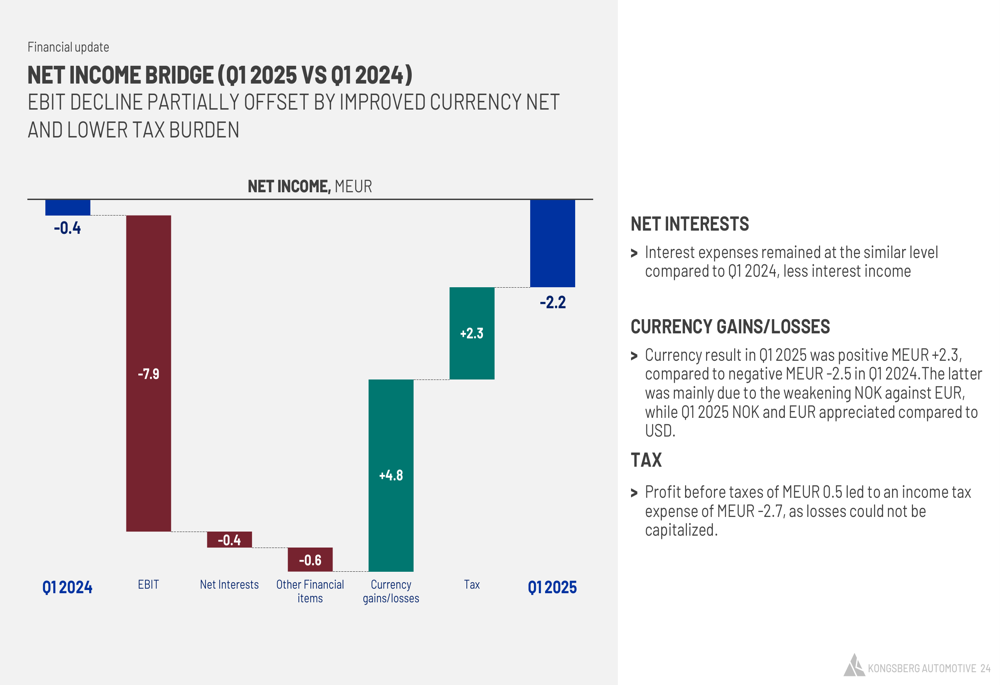
Free cash flow, while still negative at -10.5 million euros, showed improvement compared to -14.9 million euros in Q1 2024:
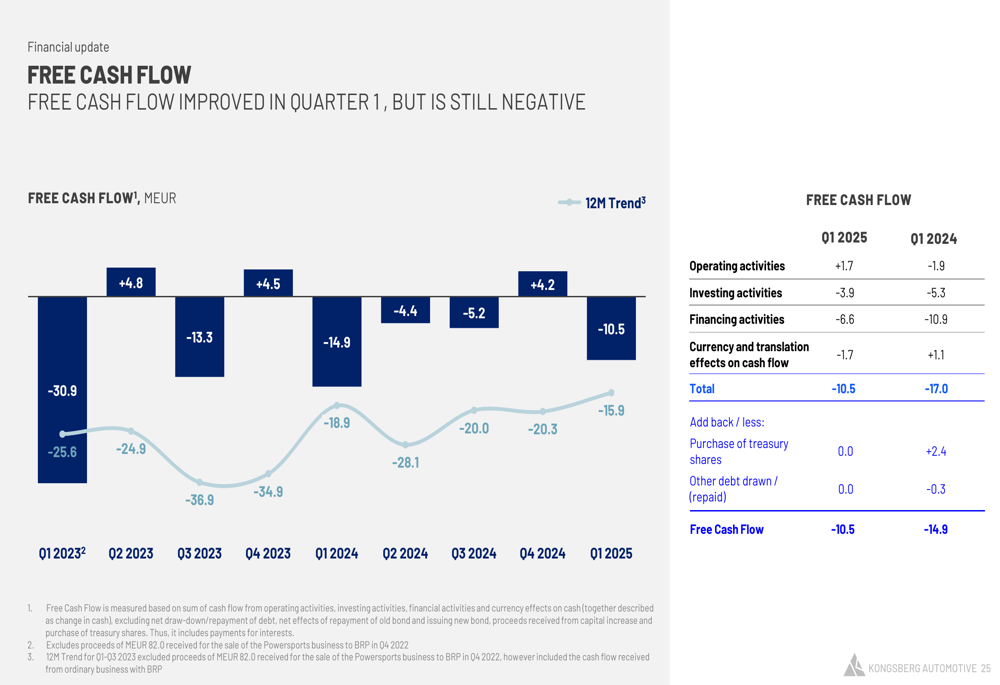
The company’s leverage ratio (Net Interest-Bearing Debt/Adjusted EBITDA) increased to 3.1 in Q1 2025 from 1.8 in Q1 2024, reflecting weaker earnings from softer demand:
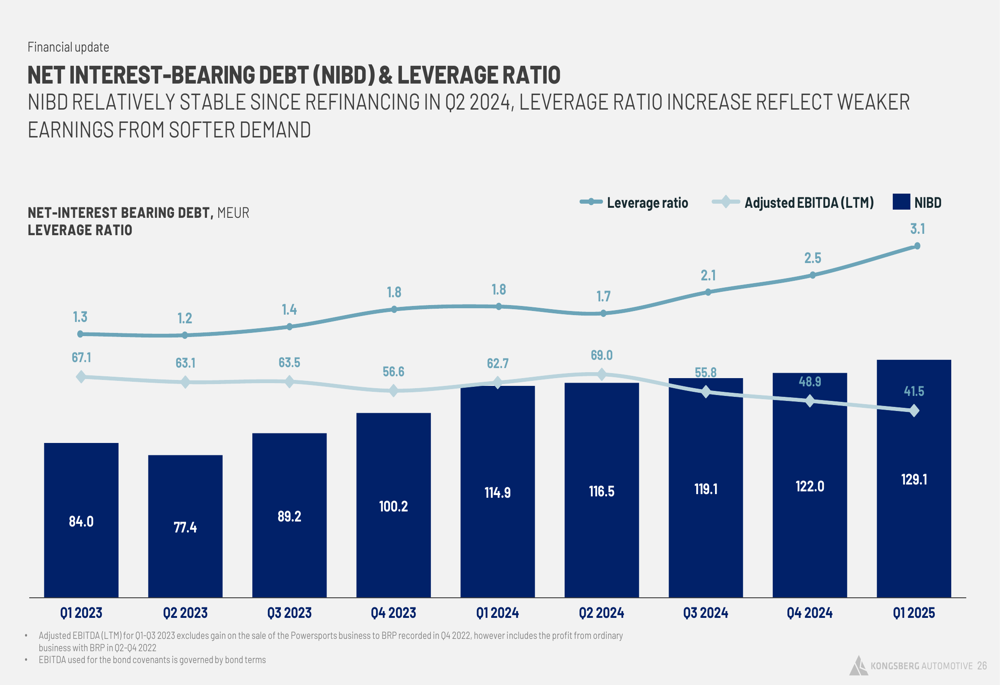
Forward-Looking Statements
Despite current challenges, Kongsberg Automotive maintained its guidance from February 25, 2025, expecting revenues to be relatively unchanged in the first half of the year compared to the second half of 2024, with potential upside in the second half of 2025. The company also anticipates positive development in EBIT margin for the full year 2025.
Looking beyond the current year, the company highlighted strong market growth forecasted for 2026-2029, particularly in commercial vehicles across all regions. This long-term outlook provides some optimism despite near-term headwinds.
The company’s book-to-bill ratio remains healthy at 1.6, though it has declined from the exceptional levels seen in 2024:

Kongsberg Automotive’s management acknowledged that the current financial performance is not satisfactory and emphasized that meaningful changes are required. The company has outlined four key priorities for 2025: further cost base adjustments, improved cash flow, strengthening the leadership team, and focusing on innovation and profitable growth.
In conclusion, while Kongsberg Automotive faces significant challenges in the short term with declining revenues and profitability, the new leadership and cost-cutting initiatives, combined with a positive long-term market outlook, provide a potential path to recovery. Investors will be watching closely to see if these measures can successfully address the company’s financial performance issues in the coming quarters.
Full presentation:
This article was generated with the support of AI and reviewed by an editor. For more information see our T&C.
